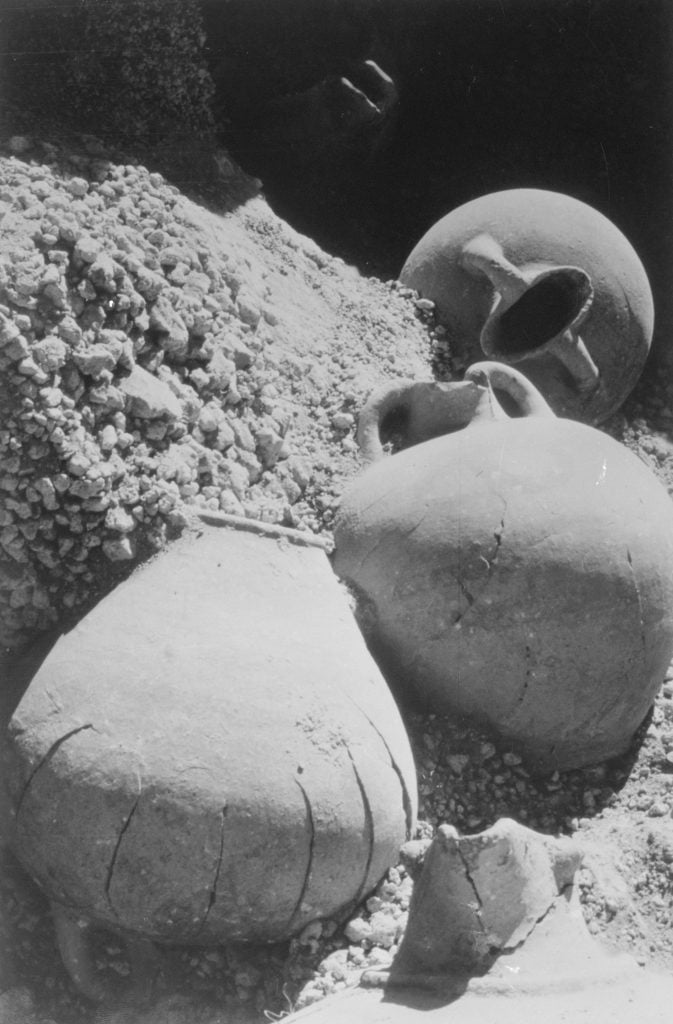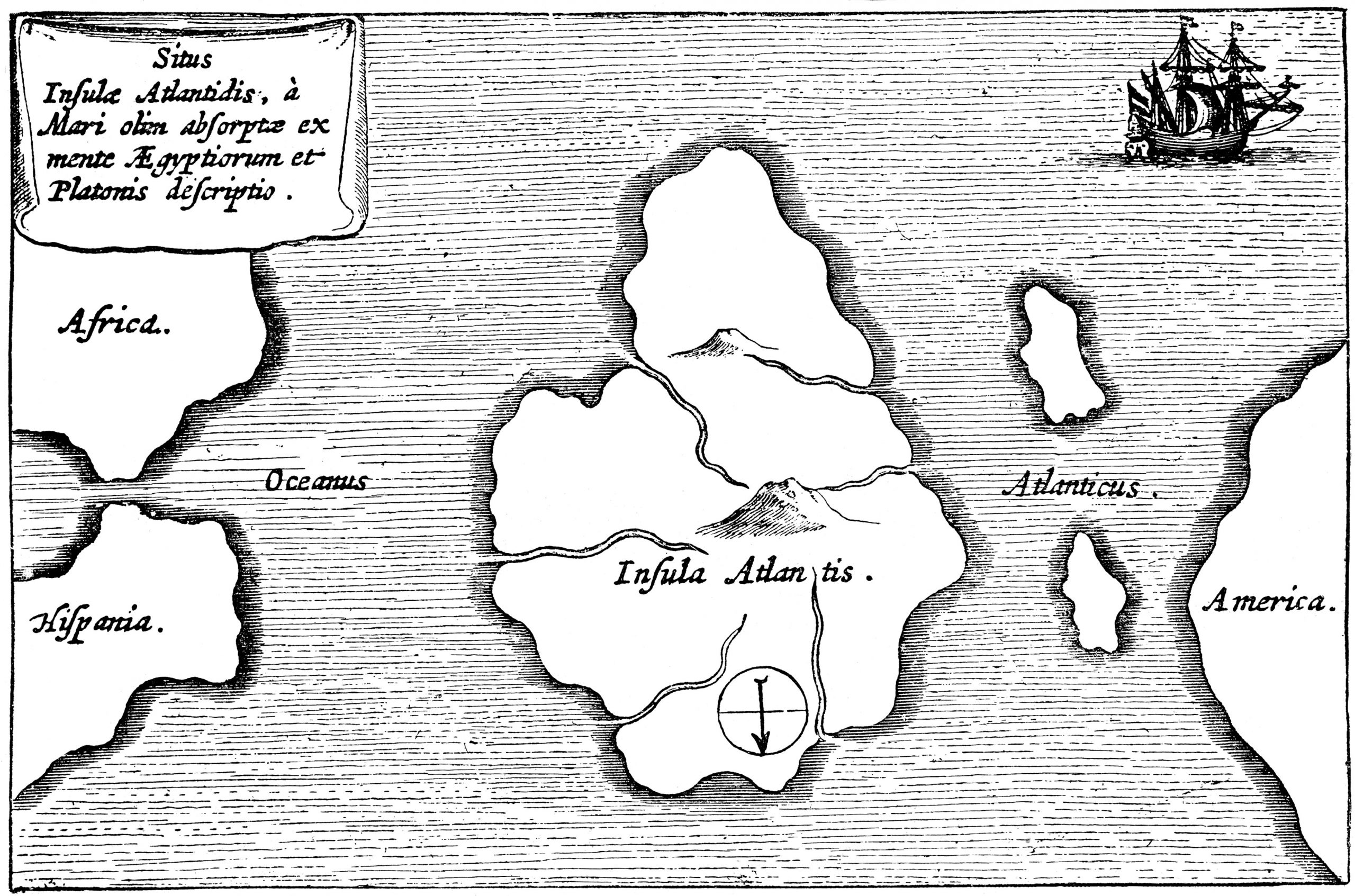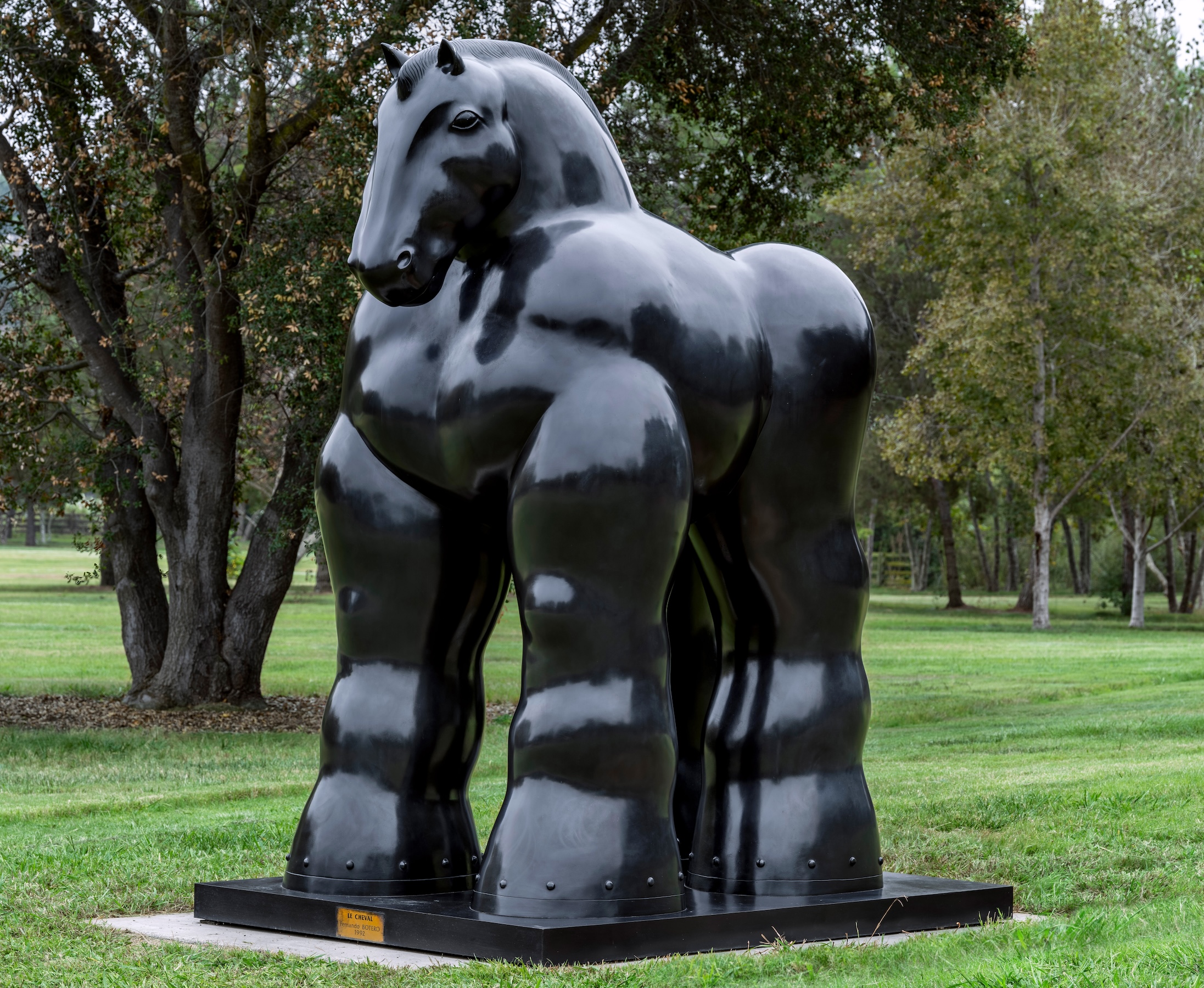The drowned city of Atlantis has captivated mankind across the centuries, as a utopian naval empire of demigods with advanced technologies that ruled the entire known western world.
The legendary city was first mentioned around 360 B.C.E. by the Greek philosopher Plato. He wrote the story of the nation’s rise and calamitous fall, when the gods punished its citizens for their hubris, sinking it to the bottom of the sea. Since then, Atlantis has been the subject of countless books, T.V. series, films, songs, and even musicals. There are an equally innumerable amount of theories about the lost city’s final resting place. Though virtually no scientist today believes that Atlantis was a real place, this was not always the case.
A 1866 Illustration of a volcano eruption on the island of Thera (Santorini) ca. 1500 B.C.E., which may have created a tidal wave that destroyed the Minoan city of Knossos on Crete, and perhaps also gave rise to the legend of the lost continent of Atlantis. Photo: Ann Ronan Pictures/Print Collector/Getty Images.
In 1670, for example, after 23 years of work, Swedish polymath and national icon Olaus Rudeck published a 3,000-page, four-volume series claiming that Sweden was Atlantis’ original location. He further insisted that Swedish was the root of all languages.
Later, in 1882, Ignatious L. Donnelly, a former populist U.S. congressman, released Atlantis: The Antediluvian World a pseudo-archaeological book that treated Atlantis as factual and historical. He posited the existence of an advanced Atlantean civilization whose diaspora shaped the cultures of ancient Europe, Africa, and the Americas, claiming that ancient Egypt was Atlantis’s first colony. Donnelly’s ideas gained traction, particularly among theosophists in the early 20th century, and continue to shape contemporary New Age beliefs.
Next came chronicler of paranormal phenomena Charles Berlitz. In the 1970s, inspired by Donnelly, Berlitz claimed the continent of Atlantis existed off the Bahamas and was swallowed up by the Bermuda Triangle, an area between Florida, Bermuda, and Puerto Rico where a number of ships and planes have allegedly vanished into thin air.
He relied partially on the predictions of Edward Cayce, an American clairvoyant who prophesied that in 1985 the United States would rediscover an Atlantean death-ray. Berlitz’s supporters latched on to the discovery of what appeared to be man-made walls and streets found off the coast of the island of Bimini, despite scientists’ assertions that the structures are natural beach-rock formations.
Charles Hapgood, an American university professor, published a book in 1958 with a foreword by Albert Einstein, in which he claimed that Atlantis was once in Antarctica, before the earth’s poles shifted and froze the continent over. In 2016, conspiracists claimed to have found photos of snow-capped Antarctic Atlantean pyramids, ignoring expert explanations that the pointed geological structures are in fact formed by glaciers.

Whole vases cracked from the volcanic pumice and ash unearthed in Thera, Greece, in 1967 by the Woods Hole Oceanographic Institution, which claimed the discovery of an entire Minoan city confirmed a theory that Thera was part of the lost continent of Atlantis. Photo: Bettmann / Contributor.
Dozens of other searches and claims of discovery have been made over the years, in Bolivia, Turkey, Germany, Malta, and elsewhere. Most recently, a British firm specializing in nautical searches, Merlin Burrows, claimed to have pinpointed the submerged city using satellite imagery and historical records to a location off the coast of southern Spain.
In 1931, two Harvard graduate oceanographers from Massachusetts’s Wood Hole Oceanographic Institution sailed around the Azores in Portugal for 42 days, using tools to scratch the top layer of sea floor and probe for evidence of Atlantis, to no avail. Over 30 years later, members of the same institution worked with Greece to uncover yet another city at the bottom of the Mediterranean, off the coast of the island of Thera.
As of yet, not one shred of conclusive evidence that Atlantis existed has surfaced. It certainly thrives in man’s imagination, which makes the legendary city real enough.
The Hunt explores art and ancient relics that are—alas!—lost to time. From the Ark of the Covenant to Cleopatra’s tomb, these legendary treasures have long captured the imaginations of historians and archaeologists, even if they remain buried under layers of sand, stone, and history.
Follow Artnet News on Facebook:
Want to stay ahead of the art world? Subscribe to our newsletter to get the breaking news, eye-opening interviews, and incisive critical takes that drive the conversation forward.










